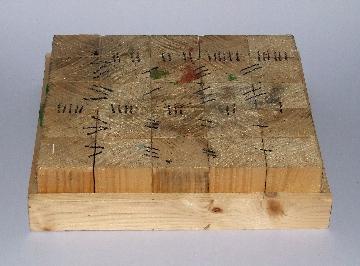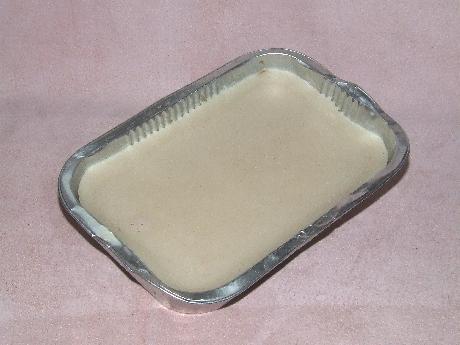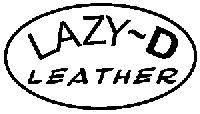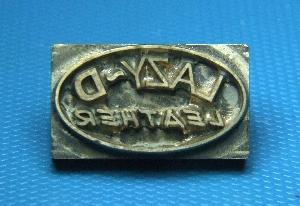-
Posts
5,931 -
Joined
Content Type
Profiles
Forums
Events
Blogs
Gallery
Everything posted by fredk
-
I'm 100% US American, 50% Bohemian, 50% Ulster Irish, 25% Irish Scots, 25% German, 10% English, 5% Polish, 5% Jugoslavian but 100% just ME
-
Anything from 0.5mm to about 1.6mm for plain coloured or 2 to 2.4mm if you are going to tool it
-
The wonders and wonderfulness of the natural world Well spotted, that man
-
Try Screwfix https://www.screwfix.com/p/magnusson-beech-wood-mallet-16oz-0-45kg/2698v
-

A little help
fredk replied to Bawarrior's topic in Purses, Wallets, Belts and Miscellaneous Pocket Items
I'm beginning to realise or find out that 'Mop & Glo' is different in our different countries Here it is as thin as water and leather needs about 3 coats to bring up a shine, 1 coat will seal dye ok though. Whereas it seems that in the US 'M&G' is much thicker and needs thinning down -
Just to settle the 'argument' about HDPE. There are various grades of it I have some small pieces, UK made, which are extremely hard and I have some Ikea kitchen cutting boards which are much softer. With the first I'll not put a punch to but I cut on them with a box-cutter/Stanley knife. Just a few cuts and the knife blade is blunt. With the Ikea boards I do occasionally use them with round hole punches and they don't blunt and leave a circular cut in the board
-
Three reasons for turning the grain; 1. when doing a line of sewing or lacing holes the multi-punch won't follow any one grain 2. I also use this for quick rough out cutting, again, the blade won't follow any one grain 3. there is a possibility that one block may start to split - that split can't travel through to any other block HDPE = high density polyethylene plastic - wot plastic milk jugs are made of, kitchen cutting boards and such. It is hard. Maybe Sheilajeanne can tell us how it compares to her poundo board. I don't have one of those
-
I use a file or mini-grinder in a motor-tool to reduce the lengths
-
A. the board in question 1. the grain of each block is turned in a different direction 2. The individual blocks are glued together and were clamped up real tight. The glue was taken to within about 1/4 inch of the top. There is minimal gap between the blocks This sort of thing can be made from a slice of a soft-wood tree trunk. B. I also sometimes just use a scrap piece of leather, usually on top of my blocks board. Any scrap leather will do, thick or thin, veg or chrome C, I've also been playing with this; a thick block of candle wax. For smaller projects. Either punch through into it or use an awl to poke a hole. When the surface gets a bit chewed up I just re-melt it and let it solidify again = a new flat surface
-

A little help
fredk replied to Bawarrior's topic in Purses, Wallets, Belts and Miscellaneous Pocket Items
Medium tan brown on all then use acrylic paints to paint in the portrait then several coats of 'Mop & Glow' floor varnish to seal it all -
Remember this? Let me share with you something I read just recently [actually a few weeks ago] Background; this was written by Archbishop Rinuccini, the Pope's envoy to Ireland in 1645. His job was to supply weapons, food and money to the main groups of Irish rebels active at that time. Although he had plenty of all supplies he still had to spread it around. When it came to distribution of food supplies he gave most to one group as 'the Ulster rebels have no caring for bread and live on trefoil* and butter. Their drink is milk and for a great treat whiskey' '. . . provisioning of the [Ulster] army during a campaign little more than a great number of cows to provide milk and butter with which the people of that country, particularly those of Ulster, usually live, with a little addition of oat meal' * nobody, as yet, has determined what this 'trefoil' is but it may be Birds-foot. The milk or butter mixed with it may eliminate the poisons
-

Why are so few small/mid sized items lined?
fredk replied to dans79's topic in Leatherwork Conversation
Take your offcuts, cut them into two-finger sized pieces, doesn't matter what shape or colour or actual size, punch a hole and thread on to a cheap-ish* split ring. Even glue two odd shaped pieces together, doesn't matter that shapes don't match, even better that the two bits are different colours, thread on to a cheap* split ring. If you do shows or markets, throw these into a basket for $1 each. People like the 'one-offs' and odd gewgaws to hang from their bags or phones *cheap as in not expensive but of decent quality, can be bought 100 for just few a $$ Takes up little time to make, can be done whilst watching TV or a home based DVD movie. Almost more profit in these gewgaws than in regular skill made bags and such -
Having had a few motorcycle accidents [me being knocked over by 4-wheel drivers] I can assure you that this is true. Also good leather does not abrade away in the way cloth does very quickly sliding 100 yards down a road surface
-
yep, I do the same Absolutely, but on some soft temper leathers even a sharp blade won't start the cut
-
Sometimes I can't get the cut to start so I push the leather into the blade to make a mark, then on that mark I use either scissors/shears or a knife to cut about 1" along what will be the strap. Then I push the leather into the cutter again and I've got a start and maybe a bit to grip to help pull the leather through
-

Why are so few small/mid sized items lined?
fredk replied to dans79's topic in Leatherwork Conversation
I line about 90% of my small items. I mainly use extremely thin lining leather and on the very odd occasion I use cloth material The 10% or less not lined is usually the cheapy 'pocket money' items -
To suit my design I did each letter of LAZY~D individually inside a frame and angled each frame
-
I use a Desk Top Publisher program [aka DTP] The stamp makers I use will work from a a good jpeg image. To get there; I do the artwork in DTP, then print it out at a large size. I then scan that print out to make it a jpeg photo type memory. I can take that jpeg in Microsoft 'Paint' or a photo editing program to adjust it and re-save it. In fact, I number each version [subject name] 01, then each change gets a suffix letter added, eg, first change is 01a, then 01b et cetera. It often I'm up to letter g or even m or n before I'm happy with the tweaked stamp image Its seems a lot of faffing about but I'm used to doing things like this and I can do it all inside a very short time edit- to add images Basic early stage design What I ended up with
-
Until you get your sewing rhythm sorted try just putting the right needle mostly thru the hole but whilst its there push the left needle thru, so both metal needles are together in the hole, then pull the left needle all the way thru with the right hand and the right needle all the way thru with the left hand - at the same time
-

The purpose of left stand sewing machines
fredk replied to Constabulary's topic in Leather Sewing Machines
-

How to save time and money by investing in machines
fredk replied to chrisash's topic in How Do I Do That?
I would never describe investment in purpose used machine tools as 'relatively low costs' When I started up my wooden toys business I/we used machine tools which we had purchased over many years at great costs. Those tools were bought for other work but were brought together and used to make toys -

The purpose of left stand sewing machines
fredk replied to Constabulary's topic in Leather Sewing Machines
Interesting. I never thought of sewing machines being 'handed' But against above, one of my sisters was very much a leftie and she found it awkward to use our 'normal' sewing machine -

Zonepack Leather Splitter with Replaceable Blades - thoughts?
fredk replied to NeilMott's topic in Leather Machinery
Delivered this morning, a short time ago. Now to go play with it, and find a space on my cluttered work bench to bolt it to. There is no room on my lesser cluttered work benches for it






